The Eyre Affair
Jasper Fforde
Pirouetting on the boundaries between sci-fi, the crime thriller and intertextual whimsy, Jasper Fforde's outrageous The Eyre Affairputs you on the wrong footing even on its dedication page, which proudly announces that the book conforms to Crimean War economy standard.
Fforde's heroine, Thursday Next, lives in a world where time and reality are endlessly mutable—someone has ensured that the Crimean War never ended for example—a world policed by men like her disgraced father, whose name has been edited out of existence. She herself polices text—against men like the Moriarty-like Acheron Styx, whose current scam is to hold the minor characters of Dickens' novels to ransom, entering the manuscript and abducting them for execution and extinction one by one. When that caper goes sour, Styx moves on to the nation's most beloved novel—an oddly truncated version of Jane Eyre—and kidnaps its heroine. The phlegmatic and resourceful Thursday pursues Acheron across the border into a Leninist Wales and further to Mr Rochester's Thornfield Hall, where both books find their climax on the roof amid flames.
Fforde is endlessly inventive: his heroine's utter unconcern about the strangeness of the world she inhabits keeps the reader perpetually double-taking as minor certainties of history, literature and cuisine go soggy in the corner of our eye. The audacity of the premise and its working out provides sudden leaps of understanding, many of them accompanied by wild fits of the giggles. This is a peculiarly promising first novel. —Roz Kaveney
034073356X
The Well of Lost Plots
Jasper Fforde
Word-of-mouth among readers often does more to make an author's name than any publicity campaign. That's certainly the case with Jasper Fforde, and The Well of Lost Plots will be eagerly devoured by his ever-growing coterie of admirers. Fforde writes playful and exhilarating books (which make delightful sport with the very art of fiction itself), and the experience his work offers the reader is quite unique. It's little wonder he has virtually created his own market. As in Lost in a Good Book and The Eyre Affair, this new novel is as much about itself and the whole world of books as it is about its putative plot. But a plot is needed so that Fforde can sustain his amazing inventiveness, and the narrative is kicked into action with the return of literary detective Thursday Next.
It's almost impossible to summarise the amazing adventures in which the beguiling (and confused) Ms Next becomes involved, but after she leaves Swindon (and her life inside an unpublished book called Caversham Heights), she becomes involved in the inauguration of a golden age of fictional narrative. But this turns out to be a very dangerous experience, and she finds herself having strange encounters with Dickens' Miss Havisham (even more eccentric than she was in Great Expectations) and enduring an unsettling journey into the world of Emily Bronte's Wuthering Heights. But who is the villain laying waste to her memories? And will she come to terms with the fact that her husband Landen exists only in her mind?
As this synopsis indicates, The Well of Lost Plots is a truly unique jeu d'esprit. It helps to be familiar with many of the books being riffed on here, but even if you're not, this will be one of the most idiosyncratic and often hilarious experiences you will find a within the pages of a book. Jasper Fforde enthusiasts know that already. —Barry Forshaw
0340825928
The Big Over Easy
Jasper Fforde
The word of mouth on Jasper Fforde has long been enthusiastic, among those in the know. But now that his readership has expanded immeasurably, the expectations for such books as The Big Over Easy are considerable. And whether or not those expectations will be met by this new book depends on the readiness of readers to strike out in new directions—just as the author has done. Fforde's speciality has long been the outrageous teasing of narrative forms, and there's a measure of that here, although more disciplined than in earlier books.
Rather in the fashion in which Stephen Sondheim exploded the world of fairytale in Into the Woods, Fforde here brings all the apparatus of the tough crime thriller to bear on the nursery rhyme. Minor baronet Humpty Stuyvesant Van Dumpty III has been found dead—and in pieces—beneath a wall in a less salubrious area of town. The perpetrator would appear to be his ex-wife, but she has shot herself. Detective Inspector Jack Spratt and his colleague Mary Mary are assigned to the case, and soon find themselves knee-deep in money-laundering, bullion smuggling and major problems with beanstalks.
This isn't quite the Fforde mixture as before, although he has previously favoured a crime motor for his plots. The skill in this outrageously entertaining (and rigorously plotted) concoction lies in a double conjuring trick: we are always amazed to find ourselves reading so assiduously about ludicrous figures (who become quite as interesting heroes as, say, Philip Marlowe) when common sense dictates only children should find such conceits entertaining. Not so! No child could appreciate the dazzling wordplay and witty imagination on offer here, and most readers will be more than happy to encounter detective Inspector Jack Spratt (and his contrary sidekick kick Mary Mary) again and again. —Barry Forshaw
0340835672
Bridget Jones's Diary
Helen Fielding
In the course of the year recorded in Bridget Jones's Diary, Bridget confides her hopes, her dreams, and her monstrously fluctuating poundage, not to mention her consumption of 5277 cigarettes and "Fat units 3457 (approx.) (hideous in every way)." In 365 days, she gains 74 pounds. On the other hand, she loses 72! There is also the unspoken New Year's resolution—the quest for the right man. Alas, here Bridget goes severely off course when she has an affair with her charming cad of a boss. But who would be without their e-mail flirtation focused on a short black skirt? The boss even contends that it is so short as to be nonexistent.
At the beginning of Helen Fielding's exceptionally funny second novel, the thirtyish publishing puffette is suffering from postholiday stress syndrome but determined to find Inner Peace and poise. Bridget will, for instance, "get up straight away when wake up in mornings." Now if only she can survive the party her mother has tricked her into—a suburban fest full of "Smug Marrieds" professing concern for her and her fellow "Singletons"—she—she'll have made a good start. As far as she's concerned, "We wouldn't rush up to them and roar, 'How's your marriage going? Still having sex?'"
This is only the first of many disgraces Bridget will suffer in her year of performance anxiety (at work and at play, though less often in bed) and living through other people's "emotional fuckwittage." Her twin-set-wearing suburban mother, for instance, suddenly becomes a chat-show hostess and unrepentant adulteress, while our heroine herself spends half the time overdosing on Chardonnay and feeling like "a tragic freak." Bridget Jones's Diary began as a column in the London Independent and struck a chord with readers of all sexes and sizes. In strokes simultaneously broad and subtle, Helen Fielding reveals the lighter side of despair, self-doubt, and obsession, and also satirizes everything from self-help books (they don't sound half as sensible to Bridget when she's sober) to feng shui, Cosmopolitan-style. She is the Nancy Mitford of the 1990s, and it's impossible not to root for her endearing heroine. On the other hand, one can only hope that Bridget will continue to screw up and tell us all about it for years and books to come. —Kerry Fried
0330332775
Bridget Jones: The Edge of Reason
Helen Fielding
7:15 am Hurrah! The wilderness years are over. For four weeks and five days now have been in functional relationship with adult male thereby proving am not love pariah as previously feared. So begins The Edge of Reason, Bridget Jones' hilarious foray into the not-so-sexy realities of relationships, the laughable legions of self-help theories and a television career that would have her model "tiny shorts next to a blow-up of Fergie in gym wear". Picking up where Bridget Jones' Diary left off, everyone's favourite singleton has finally landed her love, Mark Darcy. However, she's finding—among other things—that her dreamboat is less than ideal. Aside from never doing the washing up or foraging through the isles at Tesco, Mark, it seems, has taken an interest in the viperous "jellyfish" Rebecca, who has "thighs like a baby giraffe" and a penchant for boyfriend snatching.
If that isn't enough, Richard "I'm thinking bunny girl! I'm thinking Gladiator! I'm thinking canvassing MP!" Finch, Bridget's smarmy, cocaine-encrusted boss and Executive Producer of Sit Up, wants her to be the show's clown, in effect making her the arse of television. What's more, a builder who has an obsession for large, slimy fish seems to have forgotten about the hole he knocked out in her flat, putting her entire life on display for the neighbours. Not to mention a mother who wants her to go to see Ms. Saigon with a Kikuya tribesman hijacked from Kenya.
Never fear, Bridge's singleton posse—Shazzer, Jude and Tom—are always a phone call away and armed with bottles of Chardonnay, packs of Silk Cut, pizza and a cornucopia of self-help literature. Whether they're decoding acronyms in singles ads (GSOH and WLTM? "Giant sore on head. Willy, limp, thin mollusc."), developing the ground-breaking "Pashima theory" or dolling out unsolicited advice, the FOBs (friends of Bridget) make up most of the comedy.
Although The Edge of Reason is filled with signature B.J. manoeuvres, such as drunken Christmas card writing and wearing an unruly rubber girdle, it's a departure from the original. Throughout most of its 422 pages the plot clips at a steady rate, then, much like Bridget's train of thought, the ending skitters, careens and breaks off into two incoherent tracks—one more absurd than the other. The outcome is a metamorphosed Bridget, one more reminiscent of a British Alley McBeal than the personification of England's everywoman. —Rebekah Warren
0330367358
The Wreck of the River of Stars
Michael F. Flynn
In his excellent novel The Wreck of The River of Stars, Michael Flynn looks back on the romantic Age of Sail: the second, high-tech Age of Sail, when spaceships with vast magnetic sails rode the solar winds across the immense ocean of space, and the greatest of the luxury space liners was The River of Stars. But the second Age of Sail is dead: the magnetic sails all were struck, and the spaceships all were retrofitted with the new Farnsworth fusion drive. Once a legend, The River of Stars is now a tramp cargo freighter, plying the outer planets with a scanty crew of men and women with questionable pasts, private agendas, and more than a little interpersonal friction.
When a bizarre failure disables the Farnsworth engines driving The River of Stars, the crew has a problem no Earthly sailor ever faced: their ports don't stay put. If The River of Stars doesn't arrive on schedule, Jupiter will be somewhere else in its enormous orbit. That means the damaged ship will speed out of the solar system and drift forever among the stars. The crew's only hope appears to be the magnetic sail. But recreating a long-gone high-tech sail isn't the worst problem this motley crew faces. To survive, they must achieve something even more Herculean; they must overcome their own intricately entangled fears, hatreds, power struggles, and romantic disasters. —Cynthia Ward, Amazon.com
0765300990
|
User Friendly: The Comic Strip
J. D. Frazer
Yes, it's a cliché, but it's true enough that it's worth repeating: UserFriendly is to the Open Source world what Dilbert is to the swarming hives of Windows cubicles. Set in an ISP company that keeps getting bought and sold, the constant remains a team of cynical, hilarious techies. MBAs and marketers drift in and out, as do CEOs, often making statements like "I can't surf the Web. I think the Internet is broken." For anyone who's dealt with similar situations, User Friendly is the ultimate in-joke.
To be fair, the comic is pretty basic in layout and execution. No one will confuse this book with a graphic novel, since the visuals basically exist only to further the punch line. (Think of a stripped-down Bloom County and you're getting close.) Lots of the jokes involve goofy, clichéd rants about the beauty of Quake, Linux and Star Wars—the holy trinity for a white, wired, 18-26 year old male audience. But when the author, Illiad, nails the bloated bureaucracy found in the tech working world, it's a laugh-out-loud payoff. In one comic, a new "suit" walks into the tech den and asks what's "one thing that makes your job difficult, and we'll see about eliminating that." The chorus erupts: "Meetings." Their new boss replies: "Very good. Now let's spend a few hours discussing why meetings make you unproductive." A comic that tilts at windmills and Windows, it's clear why User Friendly developed such a strong online cult following. —Jennifer Buckendorff, Amazon.com
1565926730
The Doll's House
Neil Gaiman
"Wake up, sir. We're here". It's a simple enough opening line—although not many would have guessed back in 1991 that this would lead to one of the most popular and critically acclaimed comics of the second half of the century.
In Preludes and Nocturnes, Neil Gaiman weaves the story of a man interested in capturing the physical manifestation of Death but who instead captures the King of Dreams. By Gaiman's own admission there's a lot in this first collection that is awkward and ungainly—which is not to say there are not frequent moments of greatness here. The chapter "24 Hours" is worth the price of the book alone; it stands as one of the most chilling examples of horror in comics. And let's not underestimate Gaiman's achievement of personifying Death as a perky, overly cheery, cute goth girl! All in all, there is a roguish breaking of new ground in this book which is preferable to the often dull precision of the concluding volumes of the Sandman series. —Jim Pascoe
1852862920
Preludes and Nocturnes
Neil Gaiman
"Wake up, sir. We're here". It's a simple enough opening line—although not many would have guessed back in 1991 that this would lead to one of the most popular and critically acclaimed comics of the second half of the century.
In Preludes and Nocturnes, Neil Gaiman weaves the story of a man interested in capturing the physical manifestation of Death but who instead captures the King of Dreams. By Gaiman's own admission there's a lot in this first collection that is awkward and ungainly—which is not to say there are not frequent moments of greatness here. The chapter "24 Hours" is worth the price of the book alone; it stands as one of the most chilling examples of horror in comics. And let's not underestimate Gaiman's achievement of personifying Death as a perky, overly cheery, cute goth girl! All in all, there is a roguish breaking of new ground in this book which is preferable to the often dull precision of the concluding volumes of the Sandman series. —Jim Pascoe
1852863269
A Game of You
Neil Gaiman
You may have heard somewhere that Neil Gaiman's Sandman series consisted of cool, hip, edgy, smart comic books. And you may have thought, "What the hell does that mean?" Enter A Game of You to confound the issue even more, while at the same time standing as a fine example of such a description. This is not an easy book. The characters are dense and unique, while their observations are, as always with Gaiman, refreshingly familiar. Then there's the plot, which grinds along like a coffee mill, in the process breaking down the two worlds of this series, that of the dream and that of the dreamer. Gaiman pushes these worlds to their very extremes—one is a fantasy world with talking animals, a missing princess, and a mysterious villain called the Cuckoo; the other is an urban microcosm inhabited by a drag queen, a punk lesbian couple, and a New York doll named Barbie. In almost every way this book sits at 180 degrees from the earlier four volumes of the Sandman series—although the less it seems to belong to the series, the more it shows its heart. —Jim Pascoe
1563890895
A Season of Mists
Neil Gaiman
In many ways, Season of Mists is the pinnacle of the Sandman experience. After a brief intermission of four short stories (collected as Dream Country) Gaiman continued the story of the Dream King that he began in the first two volumes. Here in volume 4, we find out about the rest of Dream's Endless family (Desire, Despair, Destiny, Delirium, Death, and a seventh missing sibling). We find out the story behind Nada, Dream's first love, whom we met only in passing during Dream's visit to hell in the first book. When Dream goes back to hell to resolve unfinished business with Nada, he finds her missing along with all of the other dead souls. The answer to this mystery lies in Lucifer's most uncharacteristic decision—a delicious surprise.
There is something grandiose about this story, in which each chapter ends with such suspense and drive to read the next. This book is best summed up by a toast taken from the second chapter: "To absent friends, lost loves, old gods, and the season of mists; and may each and every one of us always give the devil his due." —Jim Pascoe
1563890410
Fables and Reflections
Neil Gaiman
"Wake up, sir. We're here". It's a simple enough opening line—although not many would have guessed back in 1991 that this would lead to one of the most popular and critically acclaimed comics of the second half of the century.
In Preludes and Nocturnes, Neil Gaiman weaves the story of a man interested in capturing the physical manifestation of Death but who instead captures the King of Dreams. By Gaiman's own admission there's a lot in this first collection that is awkward and ungainly—which is not to say there are not frequent moments of greatness here. The chapter "24 Hours" is worth the price of the book alone; it stands as one of the most chilling examples of horror in comics. And let's not underestimate Gaiman's achievement of personifying Death as a perky, overly cheery, cute goth girl! All in all, there is a roguish breaking of new ground in this book which is preferable to the often dull precision of the concluding volumes of the Sandman series. —Jim Pascoe
1852864974
Death: The High Cost of Living
Neil Gaiman
/Neil Gaiman /Dave McKean, Chris Bachalo and /Mark Buckingham, illustrators From the pages of THE SANDMAN LIBRARY Neil Gaiman tells the story of the one day every hundred years when Death, older sister of The Sandman, walks among humans to gain a better understanding of.
1563891336
Death: The High Cost of Living
Neil Gaiman
/Neil Gaiman /Dave McKean, Chris Bachalo and /Mark Buckingham, illustrators From the pages of THE SANDMAN LIBRARY Neil Gaiman tells the story of the one day every hundred years when Death, older sister of The Sandman, walks among humans to gain a better understanding of.
1563891336
Brief Lives
Neil Gaiman
One might think that the climax of the 10-volume Sandman series would come in the last book, or even the second to last. But indeed the heart and soul of Neil Gaiman's magnum opus lies here in Brief Lives. It could be because one of the most central mysteries—that of the Sandman's missing brother—is revealed here (in fact, the plot of this volume is the search for this member of the Endless). It could be because everything that comes after this volume, however surprising or unexpected, is inevitable. But it's more because this is a story about mortality and loss, the difficulty of change, the purpose of remembering, the purpose of forgetting, and the importance of humanity. If you have wanted to find out what all the good buzz on this great comic book series is about and haven't read any Gaiman before, don't be turned off by this volume's pivotal position in the larger story of the Sandman series. This book might actually operate better as a stand-alone story, in that its depth and compassion are more condensed, pure, and brief. —Jim Pascoe
1563891387
Stardust
Neil Gaiman
There is a way into Faerie, beyond the fields we know, and it lies in a village called Wall, somewhere in the early Victorian era. Every nine years there is a fair on the other side of the wall, where Faerie sells its wares to the mundane. Farmer Duncan Thorne had his moment of mad love with a witch's bondservant; Tristan, his son, turned up in a basket nine months later. Now Tristan is old enough to fall in love, and promises Victoria a falling star... This is a fairy story in the tradition of George MacDonald and Hope Mirlees; a book of passion and terror and wit which reminds us that Faerie is not a safe place, or a fair one. And at its edges there lurk other stories—Neil Gaiman's work in comics and television has previously shown his capacity to evoke mystery and glorious magic by telling us just enough and no more, but he excels himself here. Charles Vess's illustrations, (Vess collaborated with Gaiman on key episodes of The Sandman), have charm and occasionally more—the stars dance, Pan looms from the forest, a witch queen rides a chariot driven by goats and Tristan journeys by candlelight leagues at a step. —Roz Kaveney
1840230525
American Gods
Neil Gaiman
Within just a few pages of Neil Gaiman's novel American Gods, he commandingly reveals that he is at his considerable best with this disturbing and dark journey into the hidden soul of America. Gaiman, one of the most talented and imaginative writers at work today, achieved nigh-legendary status with his comic Sandman, which took the genre to heights that even the equally talented Alan Moore had not attained; Gaiman's subsequent career as a novelist has displayed the same glittering inventiveness and exquisite use of language.
Gaiman's protagonist Shadow has patiently done his time in prison. But as the moment of his release approaches, he begins to sense that some unnamed disaster is lying in wait for him. As he makes his way home, he encounters the mysterious Mr Wednesday, who appears to be both a refugee from a distant country at war and the King of America. And perhaps even a god. As Shadow and Mr Wednesday begin a bizarre odyssey across the United States, solving murders is only one of their accomplishments. With an epic storm of supernatural origin brewing, one questions whether they will be destroyed before Shadow pays the price for grim mistakes in his past.
The use of language here is impeccable, and it is wedded to a surreal narrative that brings out the most quirky and unsettling aspects of Gaiman's imagination. Forget Gaiman the Guru: just enjoy Gaiman the consummate writer: He opened his mouth to catch the rain as it fell, moistening his cracked lips and his dry tongue, wetting the ropes that bound him to the trunk of the tree. There was a flash of lightning so bright it fell like a blow to his eyes, transforming the world into an intense panorama of image and after-image. The wind tugged at Shadow, trying to pull him from the tree, flaying him, cutting to the bone. Shadow knew in his soul that the real storm had truly begun... —Barry Forshaw
0747274231
Endless Nights
Neil Gaiman
Featuring the popular characters from the award-winning Sandman series by Neil Caiman, THE SANDMAN: ENDLESS NIGHTS reveals the legend of the Endless, a family of magical and mythical beings who exist and interact in the real world. Born at the beginning of time, Destiny, Death, Dream, Desire, Despair, Delirium, and Destruction are seven brothers and sisters who each lord over their respective realms. In this highly imaginative book that boasts a diverse styles of breathtaking art, these seven peculiar and powerful siblings each reveal more about their true being as they star in their own tales of curiosity and wonder. THE SANDMAN: ENDLESS NIGHTS was the first comic graphic novel to be listed on the "NY Times Best-seller list. SUGGESTED FOR MATURE READERS.
140120113X
|

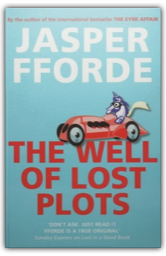
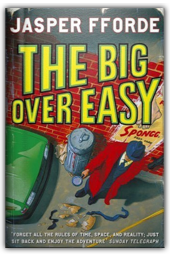


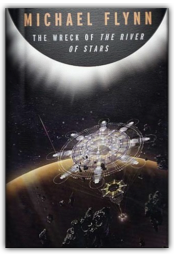
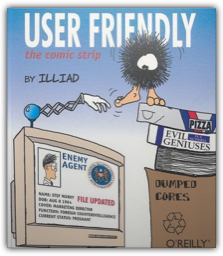


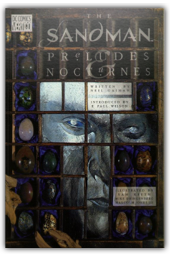
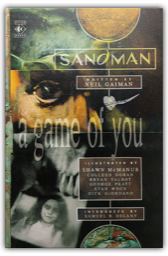
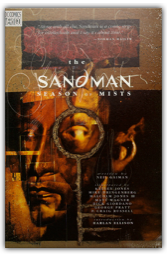
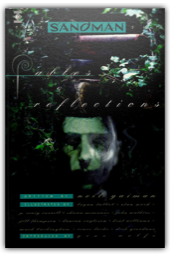

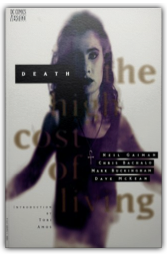


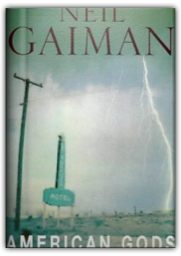



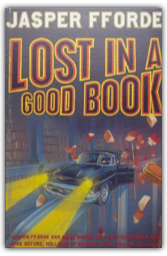

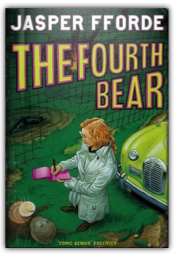
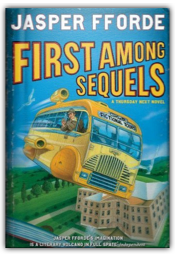
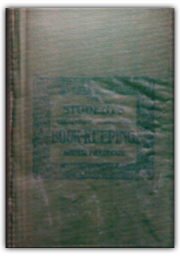






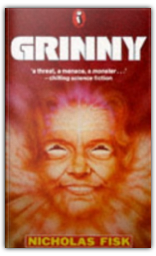


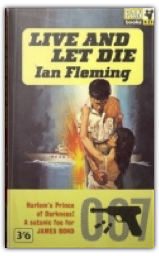
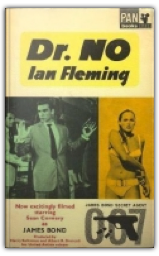

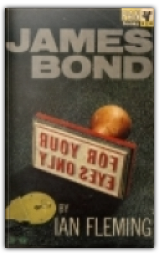

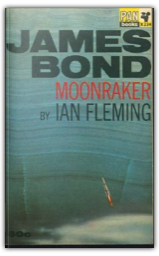

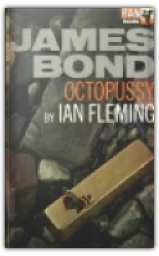



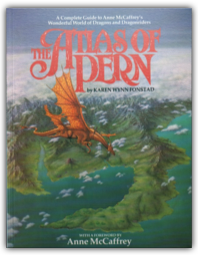





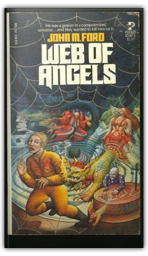


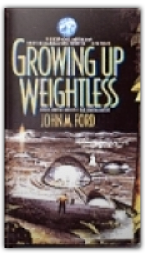



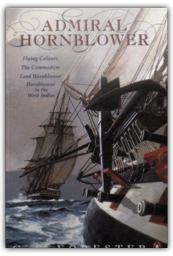


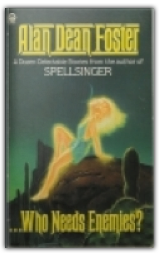


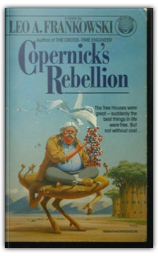
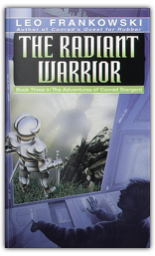

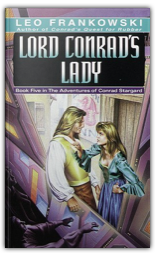



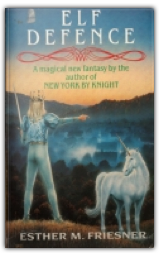
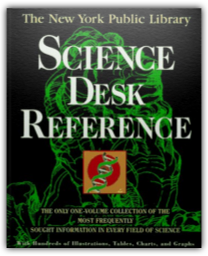
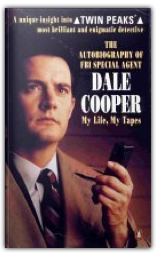




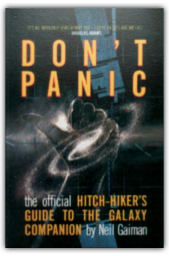
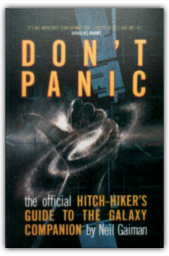


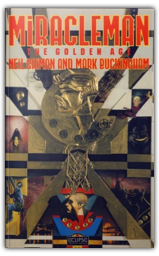


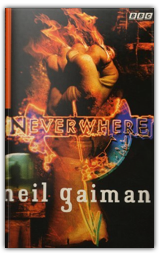
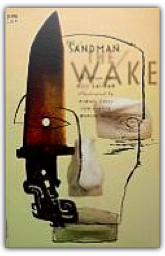
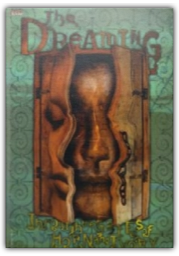

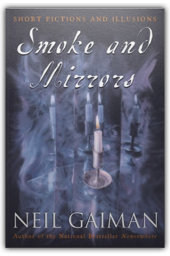

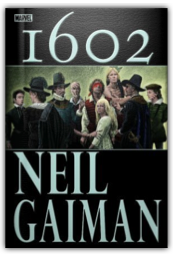
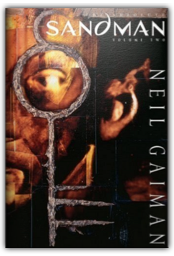
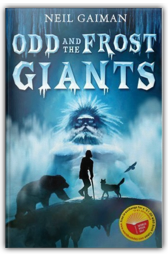

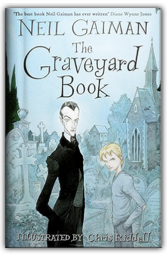

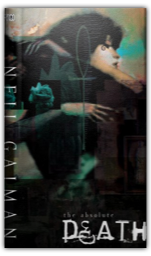
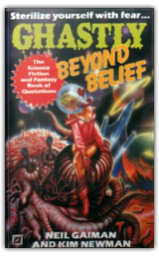
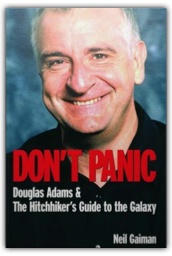
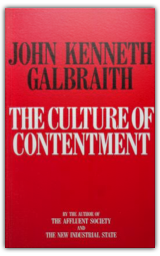
 Made with Delicious Library
Made with Delicious Library